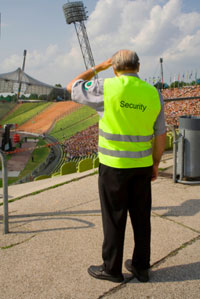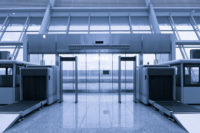 Major sporting events, like the World Series or the Super Bowl, are no longer just athletic contests – they are the new “destination vacations” and, for global events like the Olympics or the World Cup, sources of national prestige and economic drivers. The weeks and months leading up to these spectacles are filled with mini-events, taking the fan experience to unprecedented levels. Attendees spend big money on food, merchandise and travel, making the treatment of fans the most important component to planning any major sporting contest.
Major sporting events, like the World Series or the Super Bowl, are no longer just athletic contests – they are the new “destination vacations” and, for global events like the Olympics or the World Cup, sources of national prestige and economic drivers. The weeks and months leading up to these spectacles are filled with mini-events, taking the fan experience to unprecedented levels. Attendees spend big money on food, merchandise and travel, making the treatment of fans the most important component to planning any major sporting contest.
An oft-overlooked event component from the attendee standpoint is the security checkpoint, and so it should be. The less attention paid by fans to the checkpoint typically means that it’s working, as attendees tend to only notice when something goes wrong, like overcrowding or another logistical failure. Such incidents tend to set the fan experience off on the wrong foot and can cast a bad light over a nation or region, so organizers should do everything possible to prevent a nightmarish security scenario.
But a security checkpoint is a fickle beast and must ebb and flow with attendee traffic and the events themselves, not to mention emerging threats on the global stage. For organizers, there are several keys to keep in mind when developing and running security checkpoints, ensuring that attendees remain safe without damaging the all-important fan experience.
Technology: The New AND The Old
The technology used by major sporting events clearly mirrors another industry where the “fan” experience is tantamount: aviation. More and more airport checkpoint technology is making its way into the event world – and that’s a good thing. Just like events, airports are concerned with the guest’s experience, striving to improve throughput without endangering passengers.
To do this, airports are pushing the technology envelope, with new solutions like full-body scanning, high-throughput baggage screening and other innovations. These systems allow swift movement through checkpoints while using automated threat detection software to quickly pinpoint potential dangers, improving security while also reducing the onus on operator training. These solutions are not limited to the aviation world, something that event organizers should pay close attention to when it comes to enhancing their own security operations.
But the advancements in new screening technology don’t make what’s tried-and-true outdated. Metal detectors should remain en vogue with event security checkpoints, especially the new breed of detection solutions, which help operators pin-point “areas of interest” on an attendee’s person for quicker searches. Newer models also cut through electromagnetic interference, a common problem due to the proliferation of mobile devices, ensuring better detection and reducing malfunctions.
Security Providers: More than Hardware
In the past, event organizers looked to security vendors for hardware only, but while these same vendors still sell security technology, the truth is that they now bring much more to events than just metal detectors and bag screeners. Most of these vendors now strive to function as “security providers,” offering software systems that allow for the centralized management of all aspects of event security, from staffing to throughput. This helps operators and managers quickly move resources based on fluctuating incidents, like an overcrowded checkpoint, to keep security lines moving smoothly.
Beyond software, some security providers have also begun offering turnkey checkpoints. From operator hiring and training to the technology, maintenance and logistics, the vendor, rather than the organizer, oversees the minutia of the checkpoint, freeing up managers to focus on the overall fan experience. While not a fit for some events, this is a trend for event organizers to keep in mind, especially if security is not their forte.
Scan It All
Finally, event organizers must recognize that the attendee checkpoint only scratches the surface of event security. Modern threats have no boundaries and can appear everywhere, from purses to pallets – every avenue of threat dissemination must be addressed, from venue set-up (and even construction) to delivery vehicles. The threat of radioactive dangers like dirty bombs and even weapons of mass destruction are also very real, so it may be necessary to consider radiation/nuclear screening for major events like the FIFA World Cup or the Olympics.
High-profile sporting events are more than just contests — they’ve become an experience for everyone from rabid fans to extended families. As more and more money is spent on these new “destinations,” event organizers must respond to ensure attendee safety. As events continue to evolve in terms of the fan experience, security needs to be more than just a magnet and a mean-looking guard – it needs sophistication.



